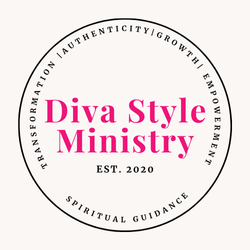Journaling is a great way to explore your thoughts and feelings as you begin or continue a journey to your spiritually authentic self.
 Your journal doesn’t have to be a blank, paged book that you write in for hours, documenting your innermost thoughts. Some journals take just minutes to update, and others use no words at all.
Your journal doesn’t have to be a blank, paged book that you write in for hours, documenting your innermost thoughts. Some journals take just minutes to update, and others use no words at all.
Journaling isn’t as much about how you do it as it is that you do it with frequency and consistency.
Depending on the outcome you desire from journaling, you can design, create, and manifest (i.e., make real) a journaling practice that accommodates your unique, spiritually authentic needs and your personal preferences and habits.
You can keep track of short, medium, and long-term goals, work through difficult times, document happy occasions and victories, express yourself creatively, engage in self-care, or simply catalog your dreams. Whatever your need, there is a way to journal it.
Let’s look at some traditional journal ideas:
- Blank notebooks – free-form and customizable
- Electronic notebooks – great for the tech-savvy person
- A writer’s pad – minimal and functional
- Fill-in-the-blank prompting journals – helping you get started
- Gratitude journals – focusing on the positive in your life
Traditional journals are great for people who love to write and who enjoy spending time laying out their thoughts and ideas with minimal prompting or influence from the outside. For those more comfortable at the keyboard, an electronic journal may be ideal – if you carry a tablet with you everywhere, use it to help you start and continue a journaling habit.
 Here are some unconventional journal ideas:
Here are some unconventional journal ideas:
- Bullet journals – getting to the point
- Video journals – for those who are comfortable expressing themselves on camera
- Bible Art journals – incorporate your faith and your journaling
- Art journals – chronicle your creativity
- Vision boards or boxes – take a 3-D approach
- Mind maps – get it all down on paper
- Food journals – dial in your nutritional needs
These unique journal styles can appeal to men and women who prefer alternatives to longhand or traditional journaling. Busy people who don’t have a lot of spare time may find bullet journaling an effective way to stay on track with their creativity without sacrificing too much energy.
Artists may love expressing their thoughts, ideas, and dreams in a doodle journal or through a series of painted pieces in a collection. Sometimes the mere activity of making art opens the mind to new thoughts while it is distracted by the art activity.
For those who prefer no-nonsense and practical methods of journaling, a  mind map may be just the ticket. Mind mapping takes ideas and thoughts and creates compartmentalized areas for each thought. Then the ideas that match that thought are neatly assigned to the thought. This is a very unique way to organize anything from starting a new business to writing a book.
mind map may be just the ticket. Mind mapping takes ideas and thoughts and creates compartmentalized areas for each thought. Then the ideas that match that thought are neatly assigned to the thought. This is a very unique way to organize anything from starting a new business to writing a book.
What I want you to take away from my blog posts about journaling is the fact that there are as many ways to express yourself as there are ideas in your head and that some journals can help bring in new ideas.
You may love to write longhand about how grateful you are each night before you go to bed, but you also have an electronic notepad on your smartphone that you can use to jot down bullet points on business ideas that pop into your head at work.
Having more than one journal is as common as journaling itself and reduces the possibility that you’ll “edit” your thoughts and feelings because you don’t have the “perfect” journal to record them in. Build a library of journals if you need them – they can be used for extended periods of time, and having multiple journals can make your life much more rewarding.





